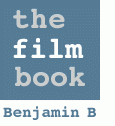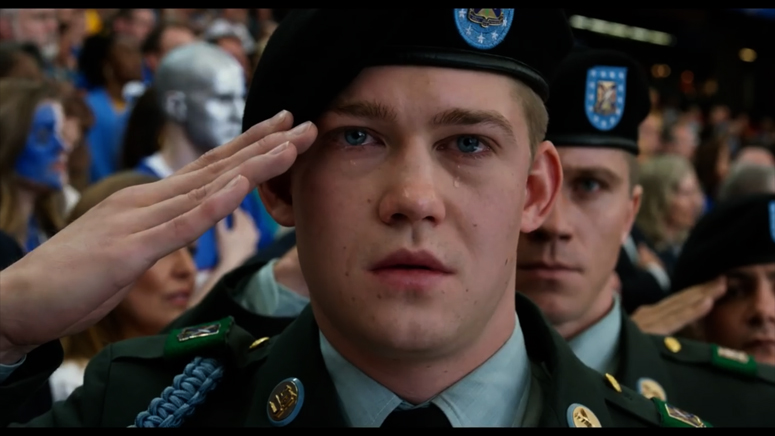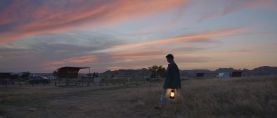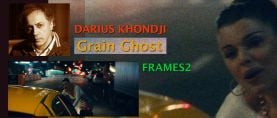
A Revolutionary Screening From Ang Lee
During IBC I had the rare privilege of catching a glimpse of the future of cinema, thanks to Ang Lee and friends. The experience was at once lifelike and dazzling, visceral and natural, extraordinary and very ordinary...

During IBC I had the rare privilege of catching a glimpse of the future of cinema, thanks to Ang Lee and friends. The experience was at once lifelike and dazzling, visceral and natural, extraordinary and very ordinary...
This post details the screening at IBC. I am also writing an in-depth article about Billy Lynn’s Long Halftime Walk that will appear in the December issue of American Cinematographer, which is based on interviews with the filmmakers.
+++

1. Billy Lynn’s Long Halftime Walk
2. The Screening Experience
3. The Trailer
4. The Team
5. The Technologies
6. New York Premiere
7. December Article
+++
1. Billy Lynn’s Long Halftime Walk
For many, the highlight of the 2016 IBC show was Ang Lee’s presentation of an excerpt from his upcoming film, Billy Lynn’s Long Halftime Walk, projected at 120 frames per second, in stereo 3D, at 4K resolution, with 28 foot-lamberts (96 nits) of brightness to the eye.
Ang Lee presented us with a stunning 12-minute sequence in the giant 1750-seat auditorium at the RAI convention center. Billy Lynn is the story of a young soldier who commits a heroic act in his first firefight in Iraq. Upon his return to the US, Billy and his company are celebrated and sent on a public relations tour to defend the war, culminating in a football game half-time show, alongside the Alabama State Marching Band and a concert by Destiny’s Child. The sequence intercuts this spectacular half-time show with a flashback to a daytime firefight in an Iraqi desert town.
+++
2. The Screening Experience
Simply put, you had to be there to get the impact of this screening. Nevertheless, here are some of the elements I retained:
-- Clarity
My immediate experience was one of incredible clarity. My brain immediately told me that I was looking at something different from ordinary cinema. It felt like looking through a window. Part of the clarity comes from the absence of motion artifacts like strobing, part of it comes from screen brightness and resolution.
-- Motion
Our perception of motion is mostly unconscious, and we therefore lack a real vocabulary to express the subtleties of, for instance, motion blur, but we feel it. It was apparent to me that the rendition of motion in this screening was different from normal movies. First, there was no strobing whatsoever. Secondly, the movement of the actors and camera felt much more lifelike.
There is a scene in a Humvee which has lots of vibration; at 24 fps excessive vibrations can be irritating, but at 120 fps the vibrations just felt real. Motion in 3D can sometimes be bothersome and even nauseating, but not at 120 fps. When the camera follows Billy as he rushes into battle, the sensation is both scary and exhilarating.
-- Naturalism
A frequent criticism of high frame rate is that "it looks like video" or, worse, "it looks like a soap opera". To me, the screening at 120 fps did not feel like video. Rather, it felt very natural and comfortable. One possible explanation is that the absence of strobing and other motion artifacts is akin to getting rid of "temporal noise", yielding a cleaner perception of motion and time.
-- Presence
Perhaps the most important feature of this new format is the strengthened presence of people and events in the image. This was evident in the action sequences -- my head jumped back at one point during a knife fight -- but even more so in the actors faces. And this is the real promise of this refined cinematic medium: the possibility of conveying the presence of a face in a new, more intense way.
+++
3. The Trailer
watch on YouTube
+++
4. The Team
At IBC, director Ang Lee was joined on stage by technical supervisor Ben Gervais and editor Tim Squyres, who gave us details of the technology and screened demos at different frame rates. Unfortunately cinematographer John Toll, ASC, could not be present in Amsterdam.
Two days before Tony Davis from RealD gave a fascinating presentation of the Synthetic Shutter technology, which was used to create 60 and 24 fps versions of the movie that retained some of the quality of the 120 fps motion blur.
I have spoken at length with Ben Gervais who gave me a wonderful overview of the entire filmmaking process. I also spoke with David Croney from 7thSense Design Ltd and Don Shaw from Christie Digital, who helped me define the system diagram below, along with Ben.
+++

- credit Benjamin B
+++
5. The Technologies
Ang Lee defined the screening conditions as "the whole shebang", because it combined many cutting-edge technologies:
-- 120 frames per second
This is the first time that a feature film has ever been shot and projected at 120 fps. This is by far the best example of HFR (High Frame Rate) that I've ever seen.
Shooting at 120 fps gets rid of judder, the discontinuity of motion we are used to seeing with 24 fps cameras. Projecting at 120 fps gets rid of strobe, the discontinuity we are used to seeing with 24 fps projectors, which is accentuated in brightly lit scenes. As noted above, shooting and projecting at 120 fps offers a stunning, lifelike rendition of motion.
-- Dolby 6P 3D
Dolby’s 6P 3D system involves 2 projectors sending images for the left and right eye superimposed on the same screen. The 2 projectors use slightly different Red, Green and Blue primaries, which combine to create a color-separated image with “6 primaries”. Dolby glasses filter 3 different primaries for each eye, to deliver the different left and right images.
This dual projection system has two big advantages: simultaneous 120 fps images to the left and right eye, and a brighter image. Single-projector 3D screenings are dimmer because half the images are sent to each eye, alternating between left and right. Clearly having images come to the left and right eye at the same time also feels more natural and less stressful than having images flash sequentially in each eye, as happens in single-projector 3D.
-- Laser
Laser projectors are brighter than Xenon lamp projectors, and they also offer purer colors and a wider color spectrum. In this case, two Christie racks of laser modules were feeding white light to the two projectors via a fiber optic bundle. The light is then broken down with prisms inside the projector into Red, Green and Blue components. Each laser rack drew an impressive 9 kilo Watts of power and required major cooling.

-- 28 Foot-lamberts To The Eye
The ANSI/SPMTE standard for light coming from the screen in 2D projection is 16 foot-lamberts (or 55 nits). Sadly stereo 3D projections only achieve about 4 foot-lamberts (14 nits); dim 3D is due to delivering the image to one eye at a time, in addition to the loss through glasses.
At IBC the laser projectors yielded an exceptionally bright screen, achieving approximately 65 foot-lamberts (223 nits) on screen and a remarkable 28 foot-lamberts (96 nits) to each eye behind the Dolby glasses. At 24 fps this high level of brightness would increase strobing, but strobing disappears at 120 fps.
-- 4K
The screening was also in 4K, which requires 4 times as much data as 2K; Stereo 3D requires 2 times as much data as 2D; so the 4K 3D image requires 8 times more data than 2K 2D. Also 120 fps requires 5 times more data than 24 fps.
Currently, Christie’s Mirage is the only projector that can deliver 4K at 120 fps. The Mirage isn’t a complete cinema projector, as it lacks the encryption feature of the DCI specification for digital movies. The Christie Mirage model used at IBC was the 4KLH.
-- SSD Server
Digital projection involves a data server, often a hard drive system that feeds the projector. The use of fast SSD (Solid State Drives) instead of hard disks enables higher data transfers in projection. At IBC, there were two Delta Infinity servers from 7th Sense Design Ltd, one for each projector. Each server had 16 1-TeraByte internal SSDs, and external storage with 8 1-TeraByte SSDs.
The 7thSense servers fed 4 streams of 2K 120fps video to each projector. The video data is made up of uncompressed 10-bit 422 DPX files.
+++

6. New York Premiere
If you're in the area, I urge you to attend the screening of Billy Lynn at the New York Film Festival on October 14th, where you can see the entire film in the same format as the Amsterdam screening.
The film will also be released in single-projector versions, including 60 fps 3D and 120 fps 2D. It's not clear how many theaters will release the movie with the whole shebang of 120 fps 3D 4K 28 foot-lamberts. I hope you have the good fortune of attending one of those screenings, so that you too can see a future of cinema.
+++
7. December Article
I wrote a feature article about the unique filmmaking process of Billy Lynn's Long Halftime Walk for the December 2016 issue of American Cinematographer, based on in-depth interviews I did with director Ang Lee, cinematographer John Toll and technologist Ben Gervais.
+++
LINKS
wikipedia: Billy Lynn's Long Halftime Walk
spectracine.com : Don't be in the Dark about Measuring Screen Luminance
christiedigital.com : Christie Mirage 4KLH
7thsense.com : Delta Infinity server
+++
My thanks to Ben Gervais, David Croney and Don Shaw for sharing their knowledge about the screening technologies.
+++








